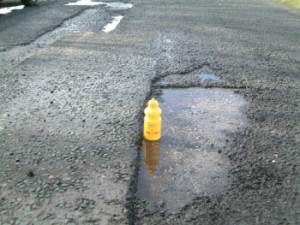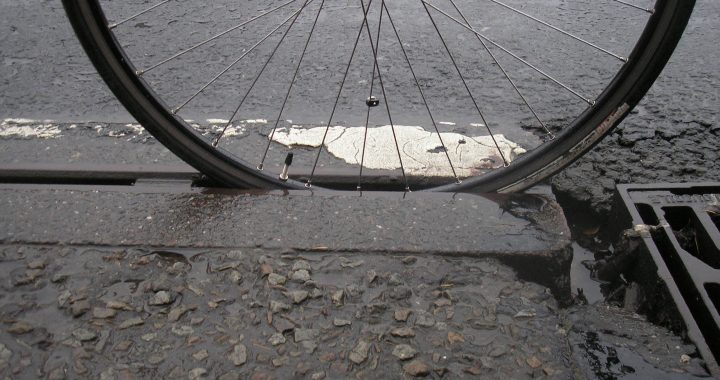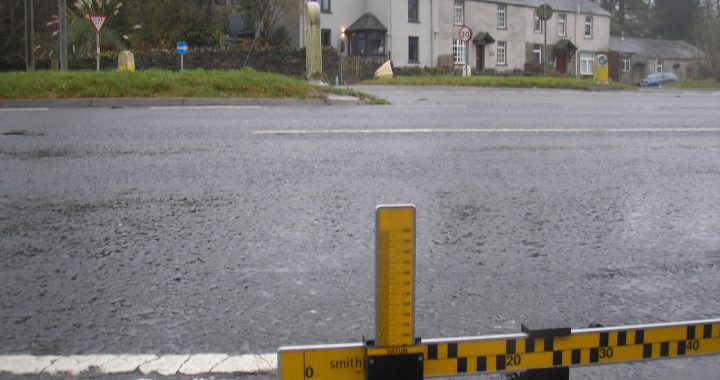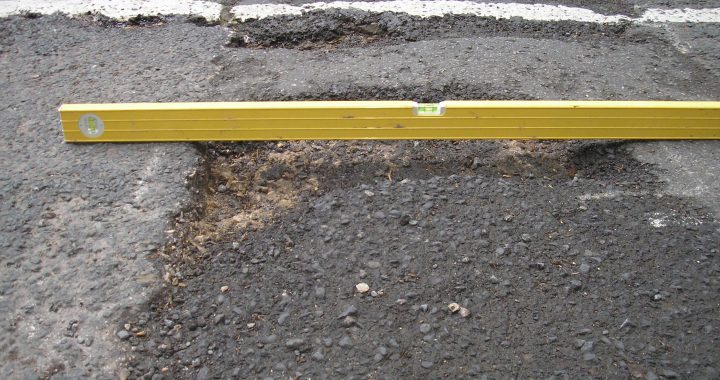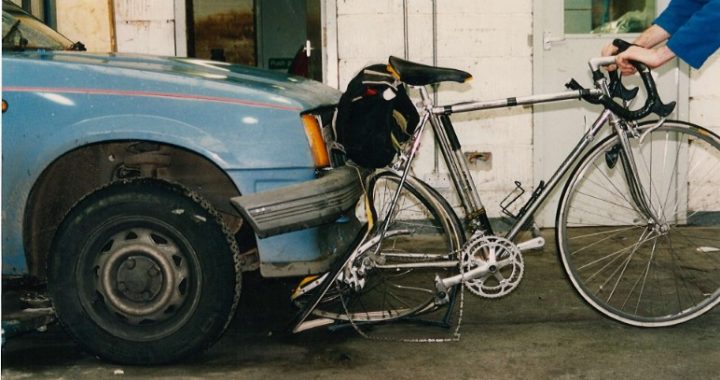We’ve covered (with links) checking for a vehicle’s tax, insurance and MOT.
Imagine you’re damage only (not injury) so retaining a lawyer is uneconomic (cannot recover legal costs unless have injuries to the value of at least £1000), so it’s you v The Insurer.
Ignore the Official Injury Claims Portal and the On-line Claims Portal. The former is for non-vulnerable road users (car passengers for example) whose injuries are below the injury small claims threshold of £5000. The latter is for claims professionals like lawyers.
You are stuck with the Small Claims process in the County Court in England and Wales and a similar though differently named system in Scotland. Make a court claim for money – mygov.scot
A fixed amount (eg replacement buckled wheel and tyre) is called a Liquidated Claim. The value will be based on what the replacement has or will cost. A receipt or estimate is needed. This amount may form the basis of a claim through Money Claims on line, a division of the County Court Make a court claim for money: Make a claim – GOV.UK (www.gov.uk)
If the claim is for an amount which cannot be quantified, it is UNLIQUIDATED and will be started with a Claim Form (Form N1) which when completed will be sent to the address in Northampton found in the link above with the necessary fee.
The booklet ex306 (available on line from HM Courts and Tribunals service) explains the procedure.
The Court process is short on investment and human resources. Don’t book a holiday in reliance on anticipated recovery.
Author Archive: admin
Micromobility: the e-scooter dilemma
Micromobility: E-scooters and other likely uninsureds.
If the collision or loss arises out of use by the Third Party of a vehicle intended or adapted for use on roads which turns out to be uninsured OR the driver/rider flees the scene, life gets complicated.
If the collision has involved an uninsured motor vehicle the Motor Insurers Bureau is ‘the insurer of last resort’. If the erring driver and their vehicle cannot be traced, the MIB is there as the safety net.
If as a legal cyclist you are injured by an e-bike or e-scooter rider who flees, what avenues to injury compensation are there?
A legal (but uninsured) e-bike does not fall within the MIB’s definition of a vehicle, so all conventional avenues are closed.
IF there was any evidence that the e-bike is outside the definition of a legal EPAC, then it falls within the definition of vehicle (moped) and the MIB may be liable. How on earth does the victim prove the negative? CCTV showing manner of progress or make/model? Witnesses? (An e-bike cruising uphill with little or no pedal input is unlikely to be legal). The Police ought to be interested.
Were the rider to do the decent thing and remain at the scene, establish name and address and record their description. Next, are they insured under a Home & Contents or Bike Policy? If not, then it’s just possible that You, the victim may have Unsatisfied Judgement Cover under your own Policy, but this is technical and a proper lawyer is needed.
E-scooters. Currently, anything NOT under a local authority hire scheme is illegal and technically a moped, so compulsorily insurable. The route is then to the MIB, uninsured motorists if the rider hangs around to give name and address, untraced if they disappear.
22% of all reported E-scooter collisions involve injury to another party, but the suspicion is that most E-scooter collisions are NOT reported. Again, the Police should take an interest.
The MIB is funded by a levy placed on Insurers who pass the cost on to all Policy Holders. So, the responsible are paying for the misdeeds of the uninsured and the illegals.
Someone is going to be grievously injured by a bandit e-bike or e-scooter and have an uphill struggle to gain any redress at a time they can least afford it.
Financial Implications: What will the real cost of a claim be to a cyclist?
For the first 25 years helping cyclists we were able to reassure the clients that they would receive the full amount of their award without any deductions because the compensator would also cover the legal costs. The polluter pays is the direct analogy. That all changed is 2013.
Unless you are sufficiently fortunate to belong to a Cycling organization such as Cycling UK which offers a special deal to its members, expect to see anywhere between 25% and 33% (plus VAT) of the award go towards legal costs plus (possibly) a premium for something called After The Event (ATE) insurance.
Or you may have some form of legal expense insurance (LEI) either as a bolt-on to a Home and Contents Policy or as part of a Policy of Cycle Insurance which has been purchased as a stand alone item. While the insurance may be branded as cycle-specific, the likelihood is that the law firms on the Insurer’s panel will not be cycle law and claims specialists. This leads to problems, more of which appears in ‘How to appoint a representative’.
Why the deductions? It’s a long story which we’ll save for a dedicated page but the blame lies in part with politicians interfering in something about which they knew very little and parts of the legal profession which exploited a set of rules designed to assist the accident victims.
Cycle-Aid: The Original Helpline for Injured (or disgruntled) Cyclists
We’ve been around for a long time, since 1989 to be exact. Back in the day we pursued claims, recovering millions of pounds for thousands of cyclists, but with a proliferation of organizations offering their services we thought it time to offer an impartial overview and try to help cyclists through the maze so they get the best outcome.
It’s quite possible we’ve met many visitors to this site after a decade attending the Cycle Show, or at Le Depart of Le Tour in Hyde Park, at countless cycle conferences and courses, at events we have sponsored and of course, as clients or over the Helpline. If so, we hope the contact was helpful.
You’ll be able to find information on cyclists’ rights and the obligations of other road users, Highway Authorities and the Cycle industry in a couple of clicks, but most importantly what to do right now if you’re just home and wondering.
Highway defect evidence.
If the index defect is a depression, bridge it, add a ruler or tape perpendicular to the ‘bridge’, measure down, record and image. 40 mm is the rule of thumb. Same goes for any differential in level, lateral or transverse to the highway.
If the defect is standing proud of the surface, balance a spirit level across and support one end when the bubble is dead centre; then measure down from the other and record.
In the spilt concrete case of Thomas v Warwickshire CC the Court decided a 20 mm protruberance was sufficiently dangerous to have merited the Council’s attention.
Bike as a comparator
This a channel running parallel to the direction of travel on the A590 in Cumbria just outside the entrance to Lakeside and Haverthwaite steam railway.
It is a design and construction issue, not a Highways Act failure to maintain. Unsurprisingly the bike stopped dead, the rider sustained a comminuted fracture to his clavicle and Highways England paid for the surgery, consequential losses and damages for pain, suffering and loss of amenity.
The bike in the pic belonged to the Cycle-Aid investigator. Always good to have one handy.
Claims Process
If you’ve had the misfortune to be taken out by another road user, highway defect of failed component, the material here and else place on this site ought to have provided some immediate points of advice.
You’ll now be ready to find a representative to take the claim forward. This is a very important step. We’re not touting for business on this site but trying to help cyclists help themselves, after over approaching 40 years of practical experience and picking up the pieces.
If membership of a Club or your Insurance takes you in a particular direction, that’s fine, but still do your ‘due diligence’ to ensure the organization does actually have the knowledge and experience and isn’t just saying so.
Experts? Well, the only Experts are dead ones because everyone has something; no-one knows it all. Your representative ought to ‘talk bike’, know the relevant Road Traffic law and Highway Code, be well versed in Highway Maintenance protocols and be able to proffer an appraisal of your circumstances.
Specialists? The ONLY benchmark which raises a Personal Injury Solicitor above their fellows is membership of one of the Law Society’s Panels; here it’s the Personal Injury Panel. Acceptance onto the Headway or Spinal Injury Association Panels is also a helpful indicator of experience; chances are that anyone on the latter two will also be on the Law Society’s Panel.
There’s no other certification which is as thorough. Membership cannot just be bought. While for reasons explained a modest claim is unlikely to receive the personal attention of such a representative, their presence in the Firm does suggest an organization which is prepared to go the extra mile.

